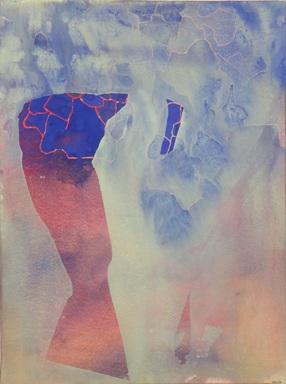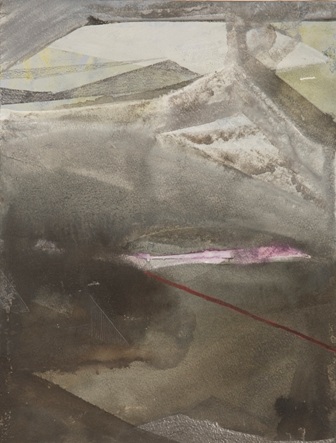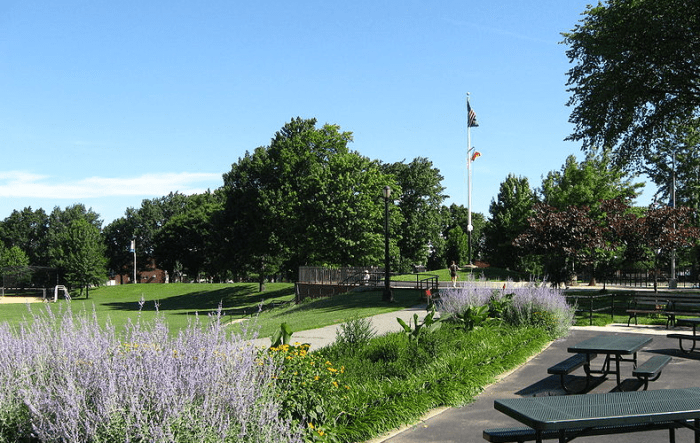Through ribbons of water-based paint, entities reserved to be seen under a microscope are visible. Ellen Schneiderman draws from the world we know at it’s most basic level, subterranian, with elements of biology, archaeology and microcosmic forces taking shape. Flowing lava, a magnified leaf and the trenches of the ocean meet the surface of the Earth on pieces of canvas in Schneiderman’s studio — the world in tiny snapshots.
“These are feelings and thoughts and worlds that don’t exist beyond the paintings themselves,” said Schneiderman. “There’s abstraction all around us, It’s just whether you’re looking for it or whether you want to see it.”
Schneiderman’s art education began in her hometown of Los Angeles, undergoing a more technique-based form of traditional training. She departed the West Coast to study at Brown University, where she encountered a learning style that emphasized more abstract ideas. Immediately after graduating in 2005, she moved to New York City.
“I really fell in love with New York and I really fell in love with Queens,” she said.
She joined a program that set artists up in underutilized spaces around Long Island City, providing them with studio space for free. She worked in a 15,000 square-foot warehouse on Jackson Avenue with several other artists, including Jeffrey Leder, with whom she formed a close bond. Schneiderman’s work has been a mainstay in Leder’s gallery for the past few years.
“I have a very strong communities of artists and painters,” she said. “I love having friends who are artists and who can give me feedback and try to understand what its like to have a life as an artist. Its wonderful if you can find that kind of community.”
While some find solitude necessary to create, Schneiderman said being around others is a necessity in her creative process, feeding off of the support of others and embracing their opinions.
“I’m very used to making art around people,” she said. “It’s something I gain a lot from. I think that’s a good thing as an artist, to be around people who think about things differently than you do and challenge you. It’s really important to have that in your life.”
And, even with the input of others, she’s made things she’s hated. It’s part of the process, she says.
“There’s something about embracing everything you make,” she said. “Mistakes don’t really matter. I’ve learned as much from the paintings that I hate as the ones that are successful.”
When she’s not in her studio, Schneiderman works at the Henry Street Settlement, a large social service agency that runs a network of homeless shelters and public outreach centers. She runs fundraisers for the agency’s Abrons Arts Center, making sure they have enough funding to continue art education for those in need. She says she doesn’t know if she’ll always do some kind of social work, what she studied in college, but for now, it’s gratifying.
Even though she’s only 30, Schneiderman said age never relates to the success of one’s career. Part of joining a collective studio space, she says, is to connect with other creatives who are at various stages in their artistic lives. It’s about the evolution — and avoiding the plateau.
RECOMMENDED
- Money-themed art exhibit to open in vacant LIC bank
- Cristián Pietrapiana’s naturalistic realism
- After a decade in Long Island City, Local Project searches for a new home




































